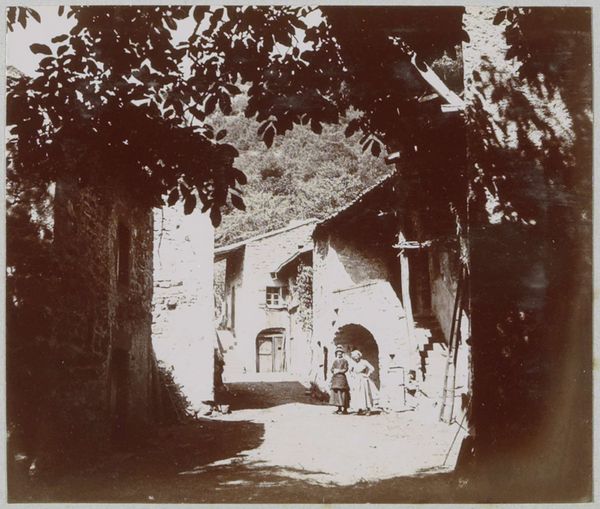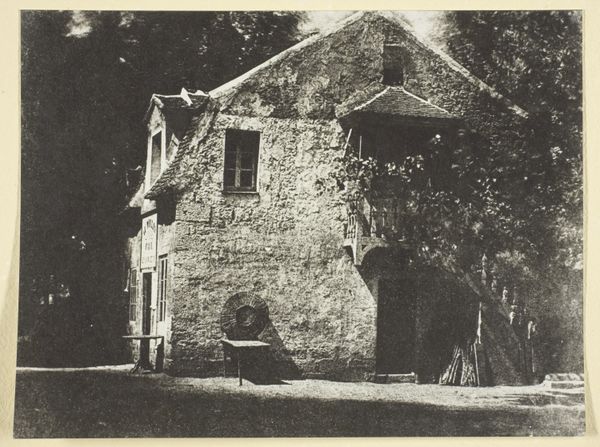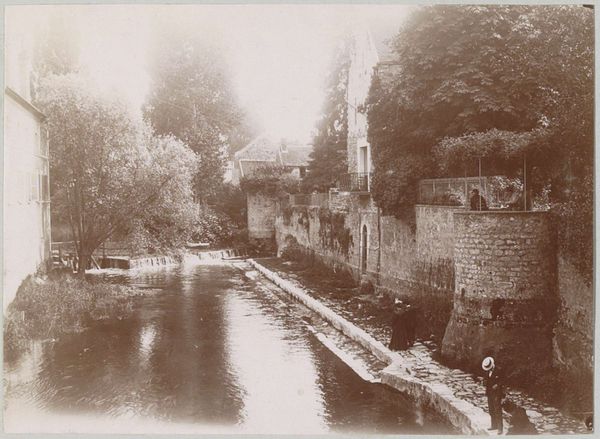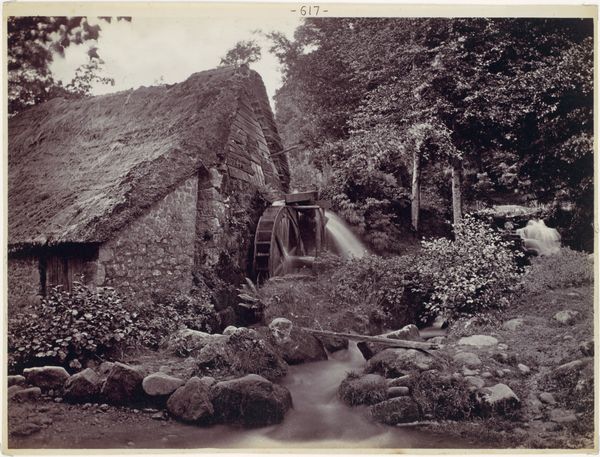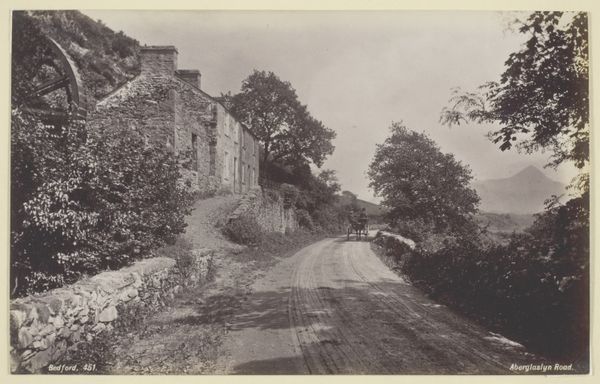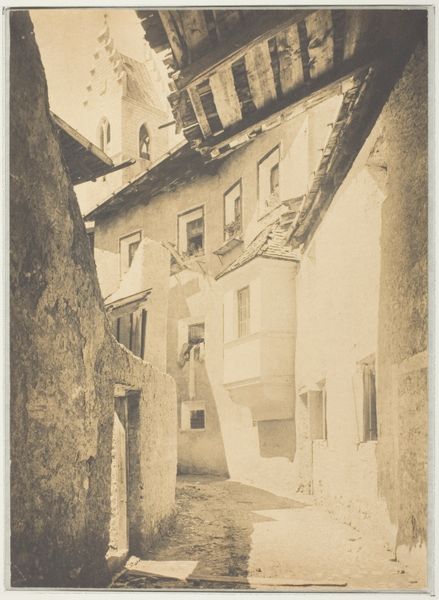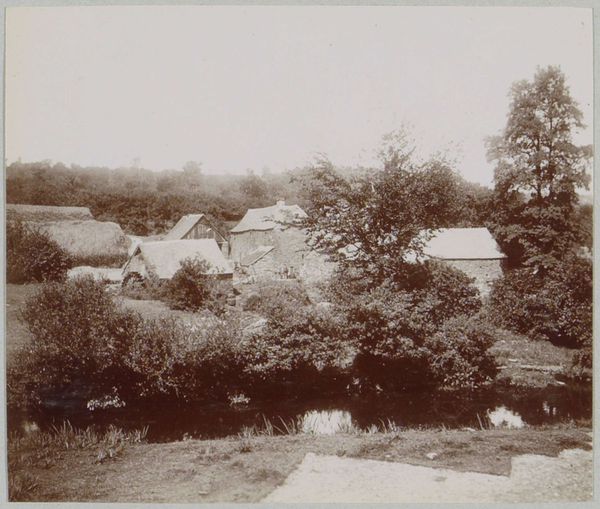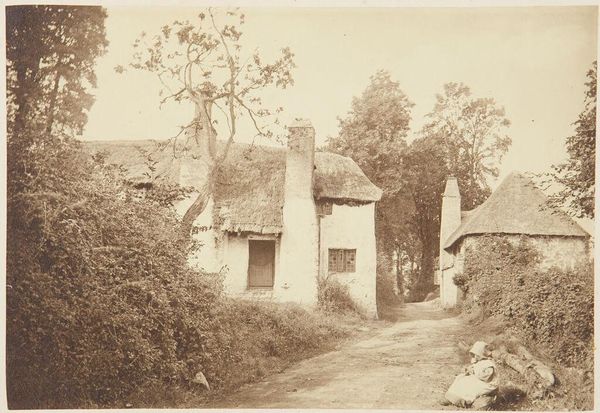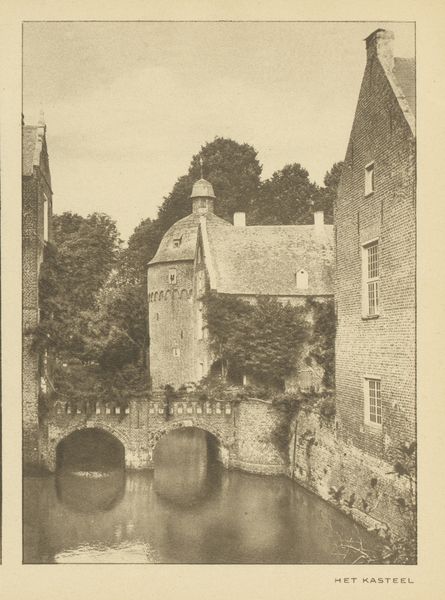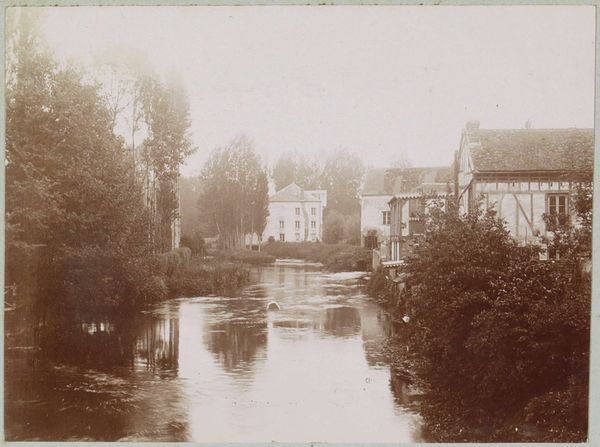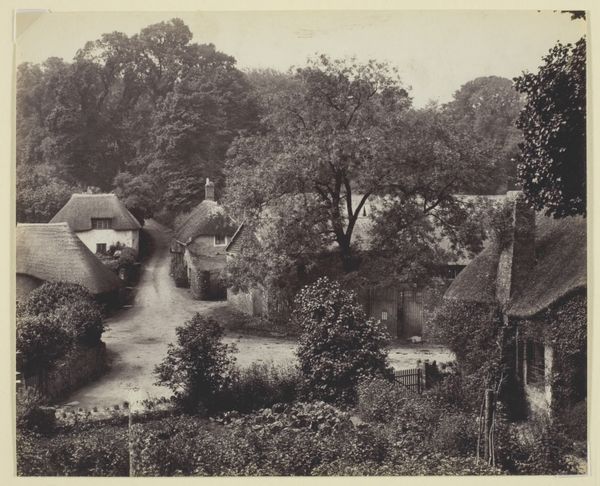
Dimensions: 43.6 × 33.2 cm (image/paper); 69 × 54 cm (mount)
Copyright: Public Domain
Edouard Baldus made this photograph, Moulins a eau en Auvergne, using the collodion process, a then-new method that allowed for detailed and reproducible images. This technique involved coating a glass plate with a light-sensitive emulsion, exposing it in the camera, and then developing it immediately. The process itself had a social impact, it democratized image-making. In this photograph, you can see watermills, a crucial part of the 19th-century economy. Built from stone and wood, the mills harnessed water power, to grind grain into flour. Baldus’ photograph, beyond its aesthetic appeal, captures a moment in industrial history, where traditional craftsmanship intersected with emerging technologies. The very act of capturing this scene with a camera—a relatively new technology at the time—introduces a layer of industrial intervention into a rural landscape. Baldus's work reminds us of the intricate relationship between technology, labor, and the transformation of our environment.
Comments
No comments
Be the first to comment and join the conversation on the ultimate creative platform.
